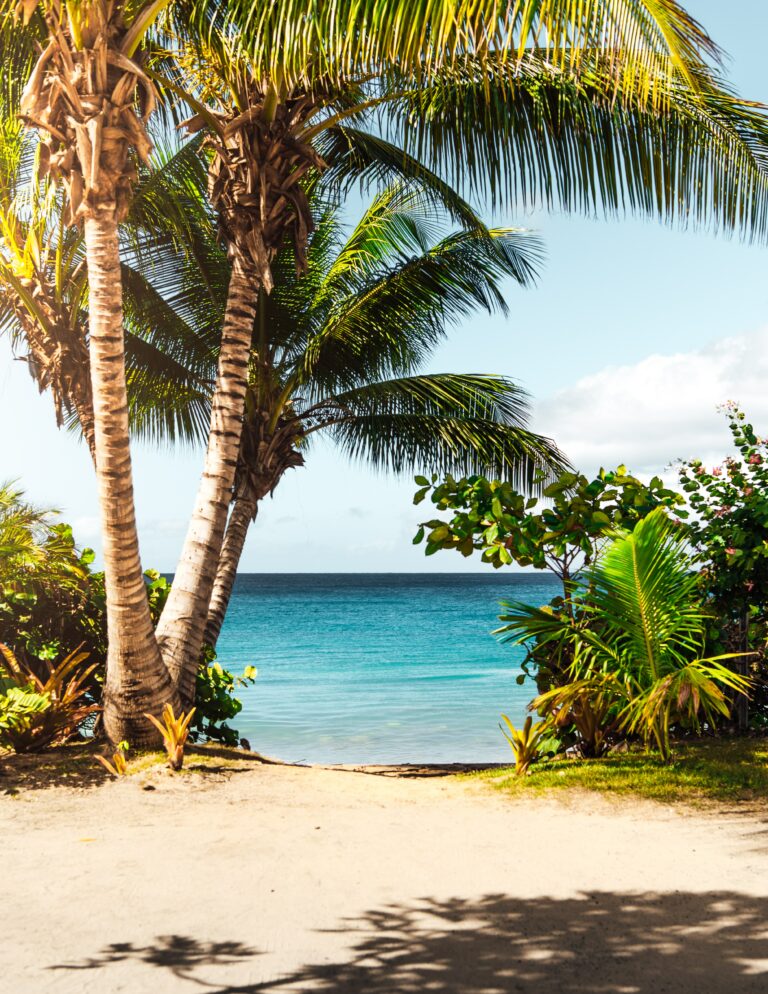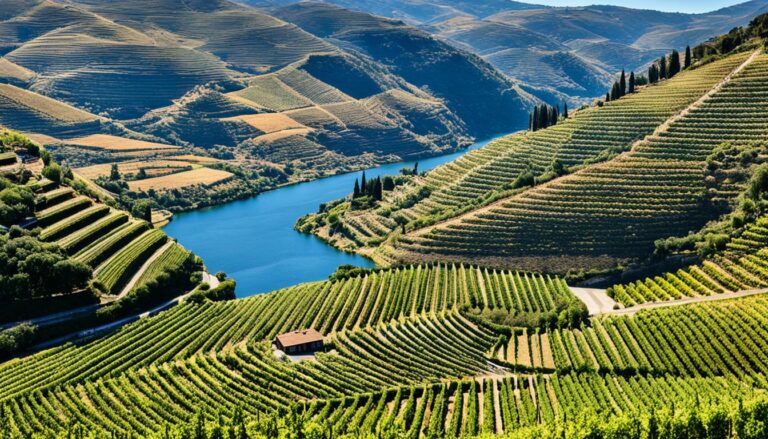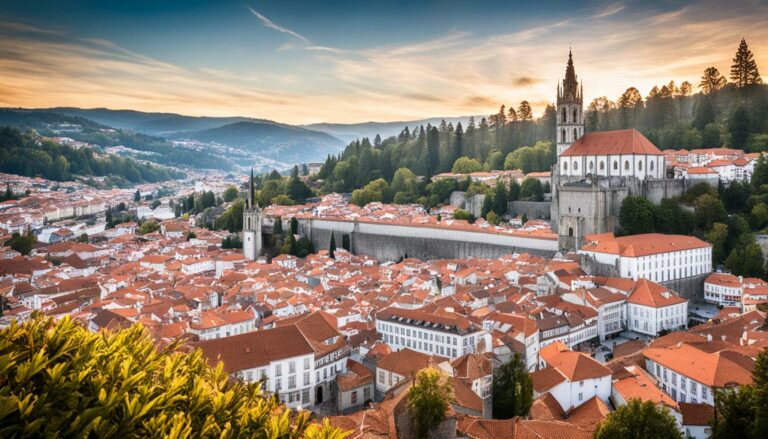Authentic Portugal: Best tips on how to Avoid Mass Tourism and get more authentic experiences.
Over the last few years, tourism to Portugal has increased exponentially, but there are still plenty of hidden gems in the country where you can escape the crowds and live an authentic Portuguese experience. We will guide you through some places worth visiting without having to take part in tourist traps, long lines, and overly crowded places.
Are you up to it? Let’s explore the best spots that offer a unique and non-touristy experience.
Swap Lisboa for Viana do Castelo
Although Lisboa is one of the oldest cities in Europe, with a lot of history and culture, mass tourism has made this beautiful city lose its authenticity. Most buildings were transformed into guesthouses, hotels, trendy food places/bars, and souvenir shops, with the majority of local people, restaurants, and shops having to move away from the city. To have a more relaxed experience in Lisboa, it is best to visit it during winter time ( November – May) and book walking and food tours with local guides.
A lot of the options out there are tailored to tourist taste and not necessarily tailored by proud local people with a deep interest in sharing their culture and personal insights with you. When in Lisboa or any other big trendy city in Portugal, we recommend you to do good research on tourism platforms or walk around and get a vibe of the place before booking anything or choosing a restaurant. Two important tips while you’re on that journey:
- Get away from restaurants with waiters outside asking you to come inside and eat (food is always bad and inauthentic).
- The restaurants that usually look dirtier/darker inside, not trendy at all, and with the menu handwritten on a piece of paper are always the most authentic ones where the local people go. They are not there to make you feel happy, but they are definitely proud of serving you good, authentic food.
- Before booking an experience, do good research on platforms such as GetYourGuide or even ABNB, and try to make sure you are actually being hosted by a local or taking part in an experience that provides local insights and knowledge. There are a lot of options out there these days, and most of them are tailored to just profit from mass tourism. Go on free walking tours to get a hold of the city and then explore independently.
We recommend skipping Lisbon and visiting Viana do Castelo in northern Portugal. It is considered one of the most beautiful and non-tourist cities in Portugal. Located at the mouth of the Lima River, this coastal gem offers a delightful mix of cultural attractions, beautiful beaches, and a vibrant local atmosphere.
History and Architecture
Viana do Castelo boasts a long and storied history, with its origins dating back to Roman times. The city’s historic center is a treasure trove of architectural wonders, characterized by elegant buildings adorned with intricate Manueline and Renaissance details. The most iconic landmarks are:
- Basílica de Santa Luzia is a grand hilltop sanctuary that offers panoramic views of the city and the Atlantic Ocean.
- Praça da República is a charming square surrounded by colorful townhouses, cafes, and shops.
- The medieval Cathedral of Viana do Castelo, with its Gothic and Renaissance features, is also worth a visit.
- The city’s narrow streets, visitors will encounter numerous palaces, churches, and mansions that showcase the city’s rich architectural heritage.
Coastal Beauty
Viana do Castelo is blessed with a stunning coastline, where the Lima River meets the Atlantic Ocean. The city’s beaches are known for their golden sands, clear waters, and excellent surfing conditions.
We recommend:
- Praia do Cabedelo is particularly popular among water sports enthusiasts. Offering ideal conditions for windsurfing and kitesurfing.
- Praia Norte and Praia da Amorosa, for those seeking a more relaxed beach experience,
- Monte de Santa Luzia, a hill located near the city center, provides breathtaking views of the coastline and the surrounding countryside.
Rich Cultural Traditions
Viana do Castelo is renowned for its vibrant cultural traditions deeply rooted in the city’s history. The Festival of Nossa Senhora da Agonia, held in August, is the highlight of the city’s cultural calendar. This lively event showcases colorful processions, traditional costumes, folk music, and dancing, attracting visitors from far and wide.
The city is also known for its traditional handicrafts:
- Filigree jewelry.
- Hand-painted ceramics
- Intricately embroidered costumes.
Make time to visit Museu do Traje (Costume Museum) as it provides a fascinating insight into the region’s traditional dress and craftsmanship.
Culinary Delights
- Fresh seafood, such as bacalhau (salted cod), sardines, and octopus, feature prominently on local menus.
- The city’s lively markets offer various fresh produce, including fruits, vegetables, and regional specialties.
A visit to Viana do Castelo would be incomplete without sampling the city’s famous regional pastry, the “bola de Berlim,” a cream-filled doughnut that is a local favorite.
Viana do Castelo is a city that effortlessly combines history, natural beauty, and warm hospitality, making it a perfect choice if you wish to spend time in a city without dealing with the dark side of mass tourism.
If you’re a fan of history, make sure to visit Viana do Castelo’s historical center, where you’ll find buildings dating back to medieval times. The Praça da República, the main square in the city, is surrounded by beautiful architecture and lively cafes where you can sit back, relax, and watch the world go by.
Where to eat? Find a Tasca instead of eating at trendy places.
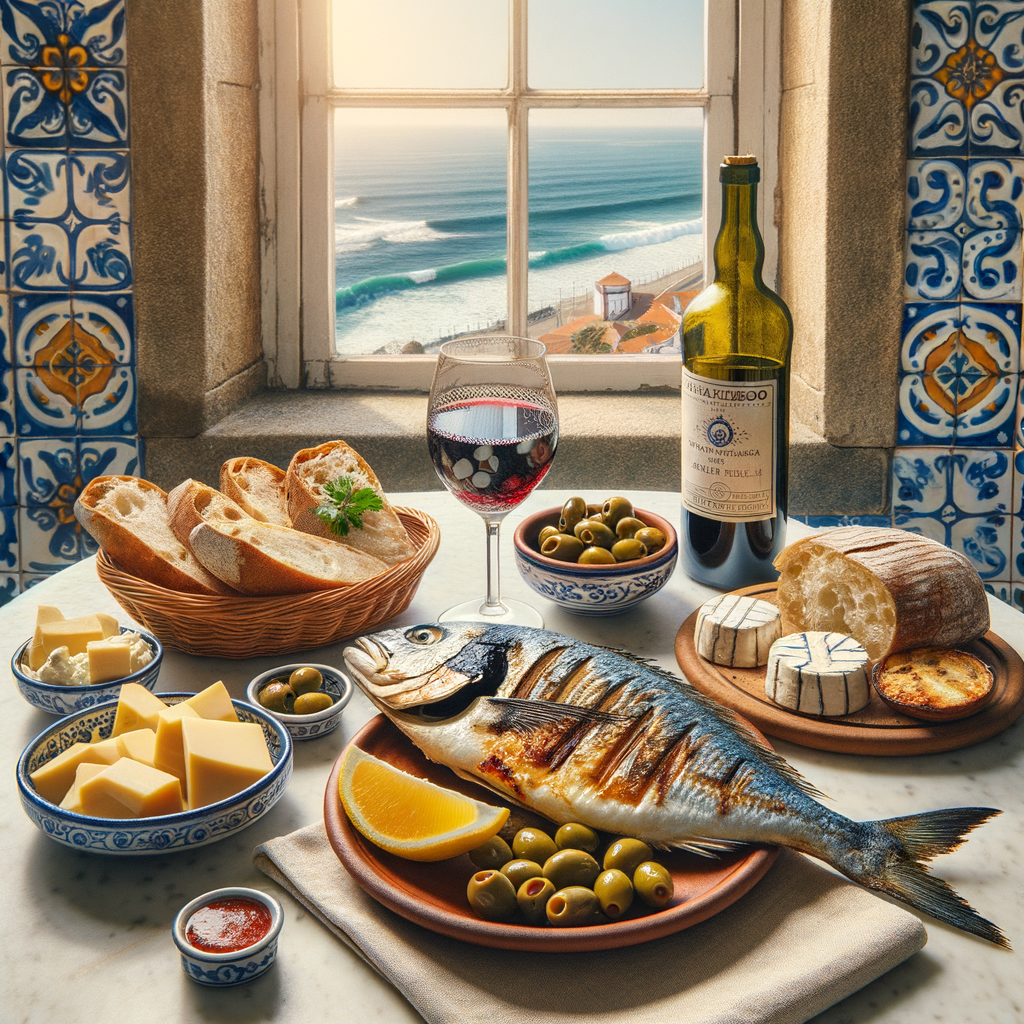
A Tasca is a small, unassuming restaurant that serves traditional dishes made with love and care. Here, you won’t find the crowds and inflated prices that often come with dining in touristy areas. Instead, you’ll be welcomed with warm hospitality and treated to a truly authentic Portuguese meal.
At a tasca, you can indulge in mouthwatering dishes such as:
- Bacalhau à Brás (salted cod fish with eggs, potatoes, and onions)
- Feijoada (a hearty bean stew with various cuts of meat)
- Carne de Porco à Alentejana (marinated pork with clams and potatoes)
- Starters such as seasoned olives, local bread, selection of regional chesses, local wine, chouriços and presunto.
These dishes are cooked with locally sourced ingredients and prepared according to time-honoured recipes, ensuring a delicious and memorable dining experience..
So, the next time you find yourself choosing between Lisbon and another city in Portugal, resist the temptation of touristy choices and consider our tips on this matter.
Skip the Algarve and head to the Azores
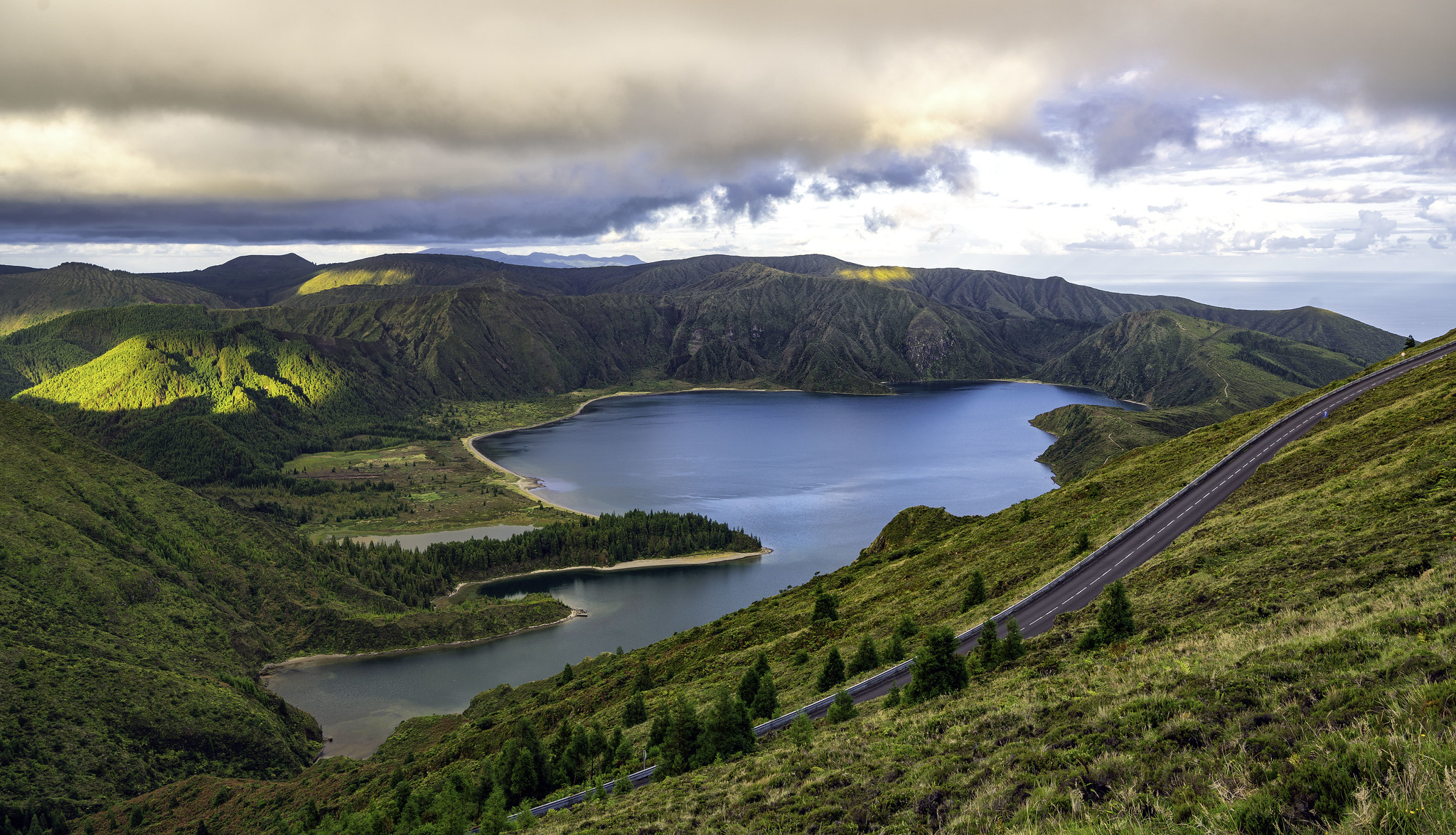
The Algarve is known for its beautiful beaches and fishing villages, but it has become way too popular among tourists and expats. For a more off-the-beaten-path experience, consider visiting the Azores.
This group of nine islands offers stunning natural landscapes, peaceful paradises, and a much smaller population of tourists. São Miguel, the largest island, is full of sleepy towns and beautiful coastal areas that are perfect for a relaxing and authentic Portuguese experience.
From breathtaking coastal cliffs to crystal-clear turquoise waters, the Azores offer a paradise-like setting that is perfect for beach lovers and outdoor enthusiasts, such as:
- Hiking (there are dozens of hiking trails leading to beautiful viewpoints, waterfalls, cascades and lagoons)
- Whale watching, dolphin watching, kayaking, boat trips.
- Secluded beaches
- Water streams and thermal waters/spas
- water sports
The Azores also offer a more alternative travel experience in Portugal, with the best months being from May to Early September. This is because during other months it rains a lot so you will not be able to explore the outdoors and sea experiences, the two main reasons for visiting this place. The amazing thing about the Azores is its temperature. Daytime and night temperatures vary very little ( 19 degrees Celsius to 21 degrees Celsius), and the water temperature at the beach is the same. You are certain to have a comfortable temperature to enjoy any outdoor activity you join.
Why Choose the Azores?
- Off-the-beaten-path beach destinations with stunning natural landscapes.
- Less crowded than the popular tourist spots in the Algarve.
- Opportunity to explore sleepy coastal towns.
- Perfect for outdoor activities such as hiking, snorkeling, and kayaking.
Leave Albufeira and Lagos for Aljezur
Looking for hidden beaches in Portugal that offer a more serene and authentic experience? Skip the tourist-filled Albufeira and Lagos and head to Aljezur.
Located on the stunning southern coast of Portugal, Aljezur is a hidden gem that combines unspoiled natural beauty, rich history, and a relaxed coastal vibe. Although it is still Situated in the Algarve region, this charming town offers visitors a perfect blend of picturesque landscapes, historical landmarks, and a vibrant local atmosphere without the dark side of mass tourism and overly crowded places.
Coastal Beauty
Aljezur is blessed with breathtaking coastal beauty, boasting some of the most beautiful beaches in Portugal. The town is located within the Costa Vicentina Natural Park, a protected area known for its dramatic cliffs, golden sands, and crystal-clear waters. Praia de Odeceixe, a stunning beach bordered by cliffs and the Seixe River, is a popular spot for both sunbathing and surfing. Other nearby beaches, such as Arrifana and Monte Clérigo, offer equally beautiful settings and excellent surfing conditions.
Nature lovers will also appreciate the rugged beauty of the nearby Southwest Alentejo and Vicentine Coast Natural Park, which features:
- Diverse ecosystems, including dunes, wetlands, and unique flora and fauna.
- Hiking trails crisscross the park, offering opportunities for exploration and breathtaking views of the coastline.
Historical Charm
Aljezur is steeped in history, with evidence of human settlement dating back thousands of years. The town’s historical center is a delightful maze of narrow streets, whitewashed houses, and traditional Portuguese architecture.
The 10th-century Aljezur Castle, perched on a hilltop, offers panoramic views of the surrounding countryside and the Atlantic Ocean. Exploring the castle’s ruins provides a glimpse into the region’s rich past and a sense of how old and influenced by the Moorish culture Portugal is.
The town also features an impressive 18th-century church, the Igreja da Misericórdia, known for its beautiful azulejo tiles and ornate baroque interior.
The Aljezur Municipal Museum, located in a former convent, houses artifacts that trace the town’s history from prehistoric times to the present day.
Surfing and Outdoor Activities
Aljezur has become a popular destination for surfers due to its fantastic waves and laid-back surf culture. The region’s consistent swells and uncrowded breaks make it ideal for surfers of all levels. Surf schools and rental shops are available for those looking to learn or improve their skills.
Beyond surfing, Aljezur offers a range of outdoor activities:
- kayaking along the tranquil rivers
- exploring the stunning cliffs through coastal hikes
- embarking on a horseback ride along the picturesque trails.
The region is also known for its excellent fishing spots, providing opportunities for relaxation and angling.
Local Gastronomy
Aljezur is a food lover’s paradise known for its fresh seafood and traditional Portuguese cuisine. The town is renowned for its sweet potatoes, cultivated locally and featured prominently in many regional dishes. Local restaurants here are everywhere, as mass tourism and trendy food places are not a reality here.
The town offers a range of accommodations, including cozy guesthouses and rustic cottages, ensuring a comfortable stay for every traveler.
Aljezur is a hidden gem on Portugal’s west coast, offering a perfect escape for those seeking natural beauty, history, and a relaxed coastal experience without the stressful environment of mass touristy places such as Albufeira and Lagos.
Spend a day or two in Lisbon or Porto, but more time in Coimbra

While Lisbon and Porto are popular cities to visit in Portugal, they can also attract a large number of tourists, making them feel more metropolitan than traditional. If you really must visit these cities, do it, but as for a city break, a day or two in each city to see their main sites is enough. For a more authentic experience, consider spending more time in Coimbra.
Coimbra, once the capital of Portugal, offers a chance to explore its medieval streets, historic treasures, and the oldest university in the country. Located in the central region of Portugal and situated on the banks of the Mondego River, Coimbra offers visitors a delightful blend of architectural wonders, charming streets, and a lively atmosphere.
If you feel like learning from the local community before you embark on your own exploration or just simply wish to learn more, we recommend a private or group tour.
Academic Excellence
Coimbra is home to one of the oldest universities in Europe, the University of Coimbra, which was founded in 1290. The university’s historic campus, known as Alta Universitária, is a UNESCO World Heritage site and a major attraction in the city. Visitors can explore the stunning Joanina Library, famous for its intricate Baroque architecture and collection of ancient books, or wander through the university’s courtyards and admire the grandeur of the buildings.
Historical Landmarks
Coimbra has a legacy that dates back to Roman times.
Make time to visit:
- The majestic Coimbra Cathedral, also known as the Old Cathedral, is a prime example of Romanesque architecture and offers panoramic views of the city from its tower.
- The Monastery of Santa Clara-a-Velha, a hauntingly beautiful ruin, tells the story of the city’s medieval past.
- The Portugal dos Pequenitos, a miniature park showcasing scaled-down replicas of Portuguese landmarks, is a popular attraction for families and offers a fun and educational experience for visitors of all ages.
Cultural Hub
Coimbra is a vibrant cultural center with a thriving arts and music scene. Fado, the melancholic Portuguese music genre, has deep roots in the city, and visitors can enjoy traditional Fado performances at various venues.
The city also hosts numerous festivals and events throughout the year, including the prestigious Coimbra Academic Festival, known as Queima das Fitas, which celebrates the end of the academic year with concerts, parades, and fireworks.
Atmospheric Streets
- Medieval streets, adorned with colorful houses and traditional tiles, create a charming ambiance that invites exploration.
- The historic center, known as Baixa, is a pedestrian-friendly area filled with shops, cafes, and restaurants.
- Take a leisurely stroll along the Arco de Almedina, the city’s ancient gateway, or relax in the picturesque Jardim Botânico, the city’s botanical garden.
Gastronomic Delights
The city is famous for:
- The mouthwatering pastéis de Santa Clara, a sweet treat made with almond and egg yolks.
- Coimbra’s traditional dish, leitão assado (roast suckling pig), is widely regarded as one of the best in the country.
- Chanfana (slow roasted goat in wooden stove, pre seasoned 24hours before with red wine, bayleaf, garlic, onions, herbs).
The city also offers a range of accommodations, from boutique hotels to cozy guesthouses. But because it is so close to the countryside, you may also stay at some countryside houses, guesthouses and Quintas (farms that instead of farming offer exquisite accommodation close to nature).
Unlike some other cities, Coimbra promises a memorable experience combining the essence of Portugal’s past and present.
Looking for souvenirs but want to avoid tourist traps? Buy tinned fish in local grocery stores, not specialty shops

Around 2012, fancy trendy shops selling canned fish became a major thing in big cities, offering tourists the opportunity to buy canned fish not just as a souvenir but to eat it themselves.
These shops opened up around the same time mass tourism hit the major cities, Porto and Lisbon, and do not represent the Portuguese canned fish culture.
Canned fish in Portugal is a big thing, with most brands and the best brands being sold in any regular supermarket, and they do not at all represent Portugal’s gastronomy. The Portuguese keep these cans at home and use them mostly on salads or dishes that they cannot invest much time in, as this is a simple way of enjoying a nice savory meal with very little effort.
The most common way of eating these canned fish is:
- Make a russian-salad with canned tuna in olive oil
- Bean salad with onios, coriander, canned tuna, boiled egg and olive oil
- Tomato sauce canned sardines with boiled vegetables
- Sandwiches with canned tuna or canned sardines.
When it comes to finding Portuguese canned fish, many tourists are drawn to specialty shops that claim to offer the best selection. However, these shops often cater more to tourists than locals, and the prices can be inflated.
Go to local grocery stores and supermarkets for a truly authentic experience and to discover traditional Portuguese food.
These products are convenient and considered Portuguese fast food and make excellent souvenirs to take home.
Buying tinned fish from local grocery stores supports local businesses and allows you to interact with friendly shopkeepers who can offer suggestions and recommendations. You’ll discover lesser-known brands that may not be available in specialty shops, providing a unique taste of traditional Portuguese flavors.
So, head to the local grocery stores the next time you visit Portugal and want to explore traditional Portuguese food or souvenirs. Return home with a taste of Portugal and share the memories of your culinary adventures.
For rare books, head to Livraria Academica instead of Livraria Lello
If you’re a book lover exploring Portugal, you’ve likely heard of the famous Livraria Lello in Porto. Known for its stunning architecture and charming atmosphere, it has become a must-visit destination for book enthusiasts worldwide. However, if you want a more hidden and authentic bookstore experience, we recommend checking out Livraria Academica.
Livraria Academica is a historic bookstore located in the heart of Porto. It may not have the same fame as Livraria Lello, but it certainly holds its own charm and history. As you step inside, you’ll be greeted by shelves lined with books, each offering a glimpse into the rich world of Portuguese literature.
Unlike Livraria Lello, Livraria Academica:
- Specializes in rare books and academic publications.
- It is a true haven for book collectors and literary enthusiasts seeking unique editions and works that delve into the depths of Portuguese literature.
With its quiet ambiance and knowledgeable staff, Livraria Academica provides book lovers with a more intimate and personal experience.
If you’re looking to dive into the world of Portuguese literature and want a more off-the-beaten-path experience, visit Livraria Academica and lose yourself among the pages of rare books while exploring Portugal’s literary wonders.
Swap the cities for the countryside
While exploring the vibrant cities of Portugal is undoubtedly exciting, the serene countryside offers a truly unique and captivating experience.
Any place away from the coastline will surely offer the peace, quiet, and respite you may need on your holidays, alongside the living culture, great architecture, and history of less-known cities and villages.
Not only does the countryside offer stunning landscapes, but it is also home to some of Portugal’s finest vineyards. Embark on a wine-tasting adventure in regions like the Douro Valley, Minho, and Alentejo. Marvel at the endless rows of grapevines, savor the delectable wines created with passion and expertise and gain a deeper understanding of Portugal’s proud winemaking heritage.
For history enthusiasts, the Portuguese countryside is dotted with enchanting historic villages that have stood the test of time. Portugal has several UNESCO World Heritage Sites that we recommend you look up before you book your trip and choose which one best suits your interests.
A visit to the Portuguese countryside is not complete without visiting its nature parks. These protected areas are havens for biodiversity and offer opportunities for birdwatching, wildlife spotting, and communing with nature.
We hihgly recommend Peneda-Gerês National Park or taking in the dramatic cliffs of Southwest Alentejo and Vicentine Coast Natural Park, the possibilities for outdoor adventure are endless.

